Loons, Monarch Update and New Arrivals
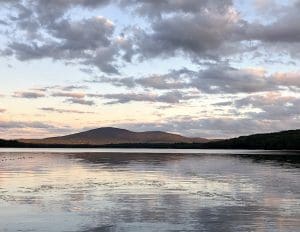
Evening Calm
Our Loon Family
Still spending a lot of time on her own, Pearl is now diving for more than 2 minutes at a time and looking quite the beautiful young loon! She is still begging from and being fed by her mom.

Pearl at mid-lake on Sunday (15th). This is her plumage for the next 2 years. It is almost as striking as the adult plumage.
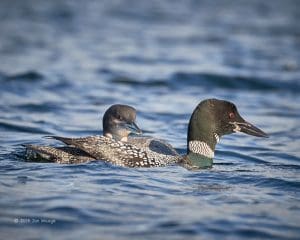
Pearl pestering her mom to bring more fish. The female is beginning to molt into winter plumage. You can see it in how dull her feathers are and the changes around her beak.
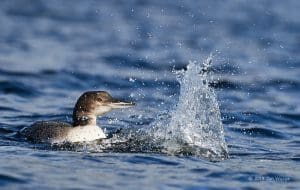
At mid-lake, the loons make a rather explosive dive to reach the depths. Mom heads down for another fish.
Monarch Update
Last year we had squirrels crossing the lake, now we have Monarch butterflies crossing on their way south to Mexico. We see several per hour while photographing on the lake.
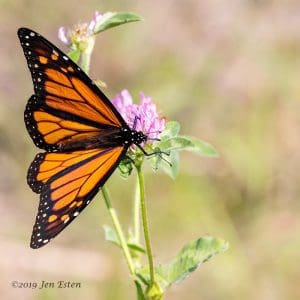
Male Monarch fueling up on red clover. Its wing color suggests it is newly emerged. These late season adults can live up to 9 months. Both sexes are now migrating to forests in Mexico for the winter. They will mate next spring and the females will begin the journey North.
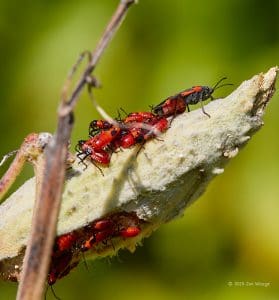
Meanwhile, back at the milkweed patch, milkweed bugs have hatched. The mother is standing guard while the nymphs suck plant juice from a milkweed seed pod.
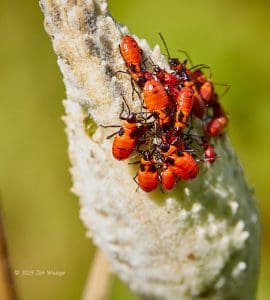
Milkweed bugs cluster in a group when disturbed. That really emphasizes their warning coloration. Bugs (Hemiptera) do not have a pupal stage. These young have wing buds (black). Their full wings appear at the final molt to adulthood
During the past month, young animals born this summer are showing up around the lake. Turtle Cove and the Pleasant Lake watershed are vital nurseries to many species. Jen has been keeping track of some of them.
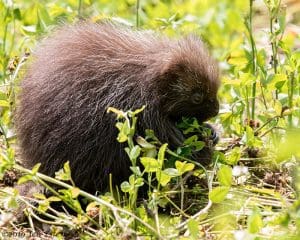
This little porcupine was accidentally shut in our garage overnight. As soon as we let him out in the morning he went into our clover and started nibbling.
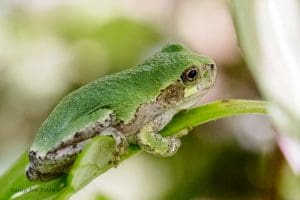
Gray tree frog (Hyla versicolor) – this one is green and as its species name indicates, they are able to change their color to match their surroundings. Not many frogs can do this.This young one was the size of the tip of your thumb.
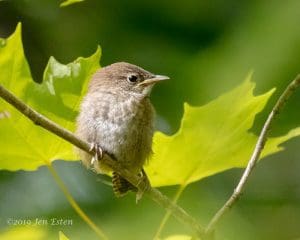
This fluffy young House Wren likes to hang around a brush pile with its siblings. Keeping a pile of dead branches in a corner of your yard is a good way to attract these helpful insect eaters.
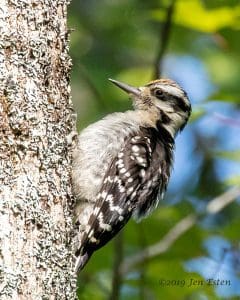
A family of Hairy woodpeckers was raised in the hole of a dead tree on the edge of Turtle Cove. Juveniles like this one have a slightly red or orange crown.
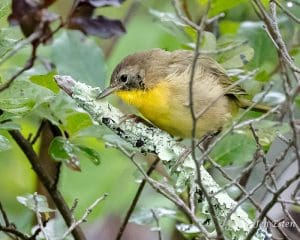
This young male Common Yellowthroat Warbler is just beginning to show signs of the mask he will wear as an adult. Common Yellowthroats nest and raise their young in Turtle Cove.

The immature Spotted Sandpiper has an unspotted breast along with a bit of a brown collar and yellow legs. Breeding adults are spotted and have grey legs. They nest and raise their young all around the shore of Pleasant Lake.
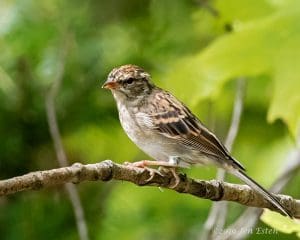
Chipping Sparrow – immature birds have a brown crown with dark streaks and a black eye line. They are our most common sparrow in the watershed, along with the Song Sparrow.
To be continued … Jon and Jen
